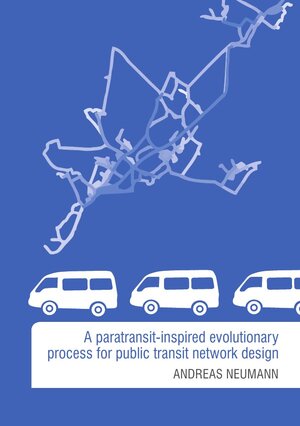
×
![Buchcover ISBN 9783844299458]()
A paratransit-inspired evolutionary process for public transit network design
von Andreas NeumannThe following three objectives are treated in the thesis:
The minibus model can be applied to two different fields of transport planning. First, there is the simulation of real paratransit that aims to help understand the implications that lie within the relationship of the different paratransit stakeholders. The model is able to create “close-to-reality” minibus networks in a South African context. Second, the same model provides a demand-driven approach to solve the network design problem of a formal transit authority. Thus, it can be used as a planning tool for the optimization of single lines or networks. In the thesis, the model is applied to two different planning problems of the public transit authority of Berlin, BVG. In the first scenario, the model constructs a transit system from scratch for the district of Steglitz-Zehlendorf. The second scenario analyzes the impact of the closure of Tegel airport on BVG’s bus network.
The model does not only grow networks from scratch but can also test for an existing transit line's sustainability and can further optimize the line regarding its frequency, its time of operation, its length, and its route. Again, the optimization process is fully integrated into the behavior-rich environment of a multi-agent simulation reflecting the reactions from the passengers as well as from competing transit services and other road users.
The minibus model can be applied to two different fields of transport planning. First, there is the simulation of real paratransit that aims to help understand the implications that lie within the relationship of the different paratransit stakeholders. The model is able to create “close-to-reality” minibus networks in a South African context. Second, the same model provides a demand-driven approach to solve the network design problem of a formal transit authority. Thus, it can be used as a planning tool for the optimization of single lines or networks. In the thesis, the model is applied to two different planning problems of the public transit authority of Berlin, BVG. In the first scenario, the model constructs a transit system from scratch for the district of Steglitz-Zehlendorf. The second scenario analyzes the impact of the closure of Tegel airport on BVG’s bus network.
The model does not only grow networks from scratch but can also test for an existing transit line's sustainability and can further optimize the line regarding its frequency, its time of operation, its length, and its route. Again, the optimization process is fully integrated into the behavior-rich environment of a multi-agent simulation reflecting the reactions from the passengers as well as from competing transit services and other road users.


